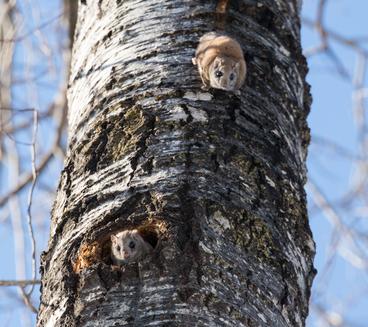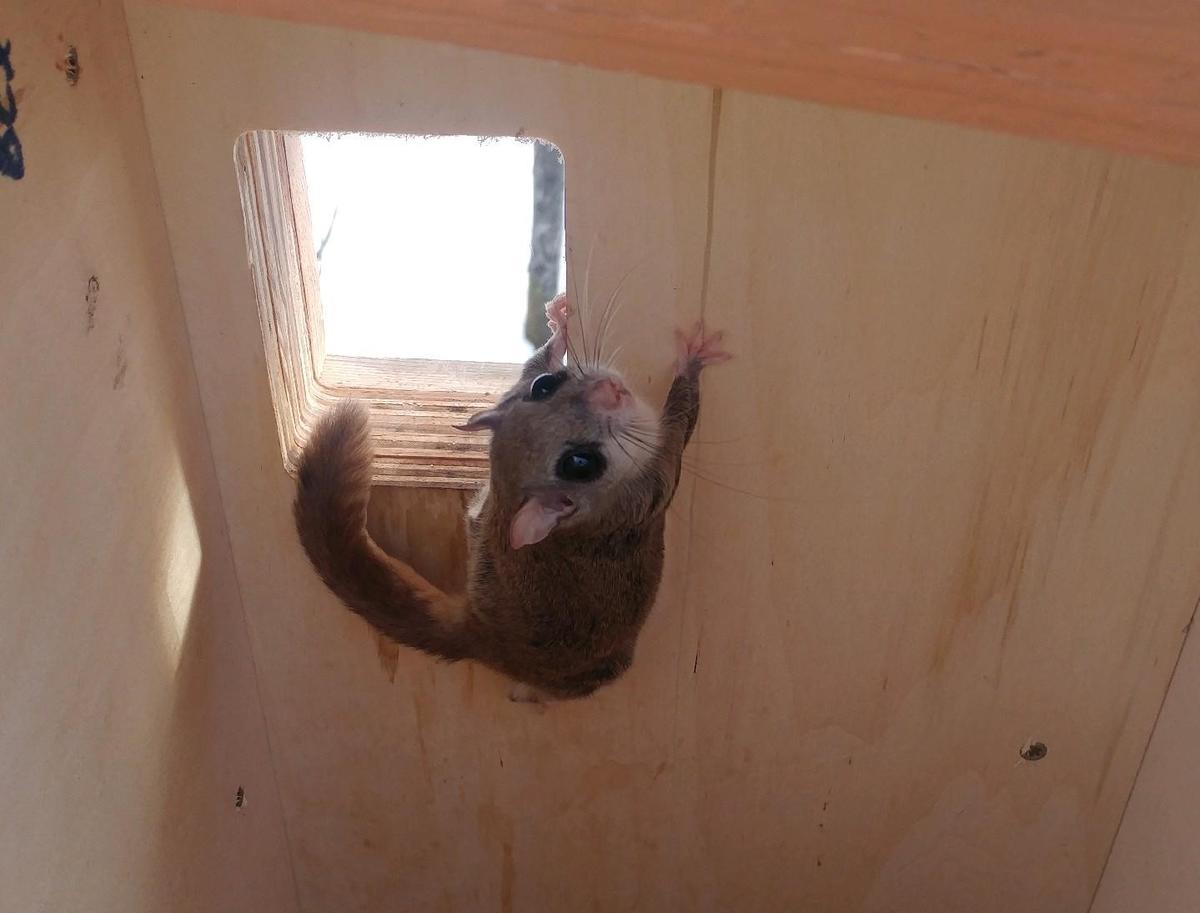Flying squirrels are a big-eyed, nocturnal, caped crusader of the treetops. They’re a native species in Minnesota and their white belly might be spotted gliding overhead at a late-night summer bonfire or descending into a backyard bird feeder for an evening snack.
But the warming climate is allowing the Southern flying squirrel to expand northward, pushing its larger northern cousin further north.
And that surprised NRRI Wildlife Biologist Michael Joyce.
Surveying small mammals in northern Minnesota forests in 2020, he and his team didn’t capture the expected Northern flying squirrel. They only captured the Southern flying squirrel, even though historical data points to the study area being Northern flying squirrel territory.
“We had seen flying squirrels on our cameras set up to monitor our fisher den boxes, but it isn’t always possible to tell which species it is because they’re so similar,” said Joyce. “After the survey we took a harder look at the images and they are probably all Southerns, which are slightly smaller than Northerns.”
But what’s really surprising is how fast the Southern species’ ranges is expanding – up to about 12 miles a year, according to studies done in Ontario.

“And that’s really fast for such a small animal,” said Joyce.
So while he could find studies in Michigan, Wisconsin and Ontario documenting flying squirrel range shifts due to climate change, there’s no data on exactly where each species currently lives in Minnesota.
Joyce is hoping to change that.
NRRI provided the seed money he needed to outline this new research. The NRRI Funding Review Board approved $7,500 for a pilot study on flying squirrels in Northern Minnesota. Now complete, Joyce and his team are now ready to design a significant research program and seek funding with regional agency partners.
NRRI’s internal funding gave the wildlife team time to get comfortable with new equipment, understand the parameters of the research and think strategically about what research questions need to be answered. Having a proof-of-concept data before seeking full funding is critical for successfully attracting grant support.
“We set up acoustic detectors because the Northerns and the Southerns have different calls,” said Joyce. “One of my colleagues says the Southerns’ call is slower, like a bit of a drawl.”
Specifically, Joyce wants to know where each species lives in Minnesota and how quickly their range is expanding. Could their different eating habits impact the forest ecosystem? Are the Southerns hybridizing with the Northern species?
“It’s important to document changes to the ecosystem due to climate change because it may affect the system in ways we don’t yet know,” said Joyce. “Not every change is going to have a strong consequence, but it’s important to understand potentially cascading impacts for forest and wildlife health. We can’t address a change if we don’t know, and can't document, it’s happening.”
PHOTO ABOVE: A Southern flying squirrel holds its post in a fisher den box when NRRI researchers checked for temperature data last winter. (Credit: Mike McMahon)
